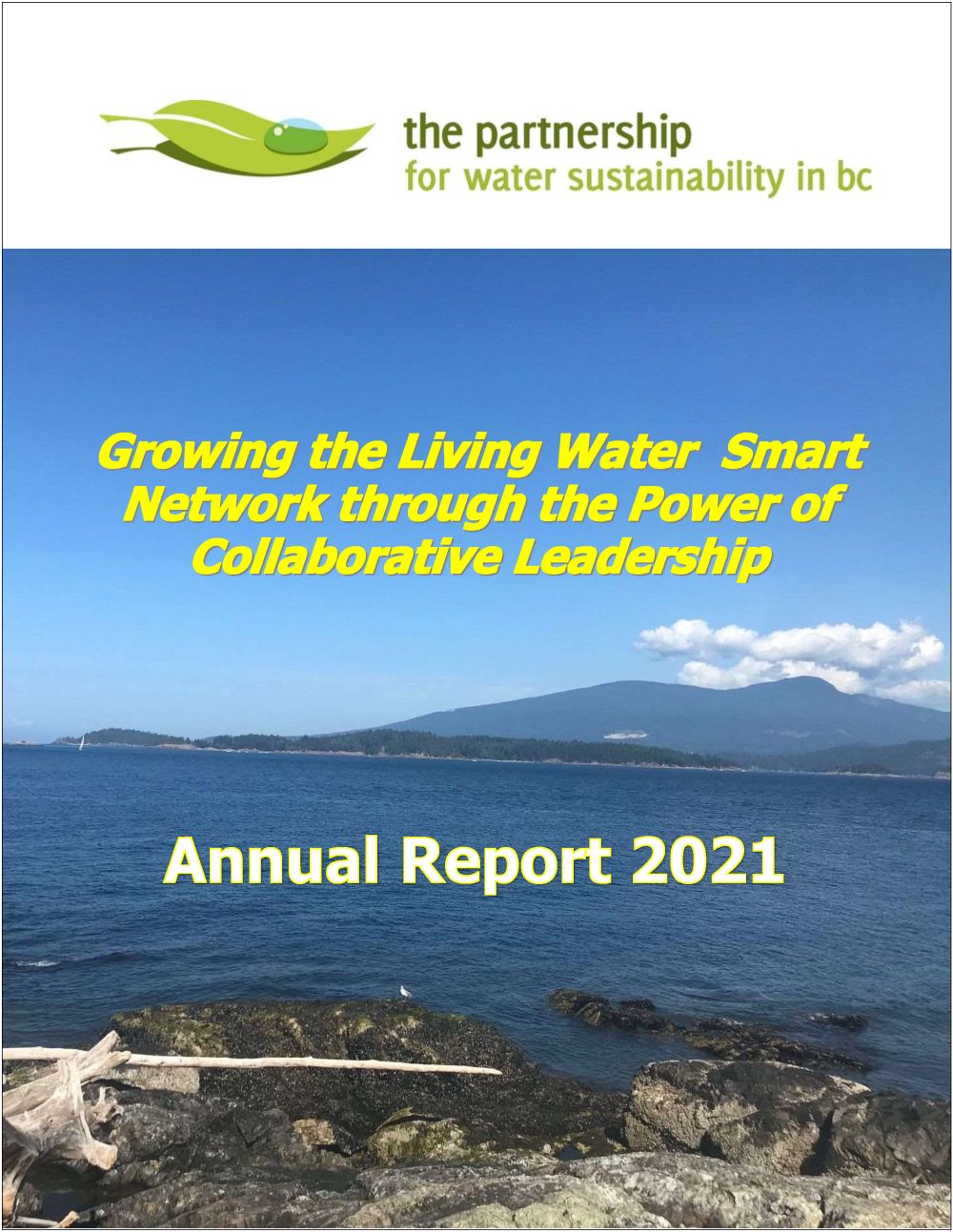THE STORY OF GUICHON CREEK: “Fifty years ago, few people felt that it was worth the trouble or the cost to try and bring degraded urban streams and rivers back to health. I believed very differently and would say, we must try. We can turn around almost anything when there is a will, a plan is in place, and there is commitment,” stated Mark Angelo – conservationist, author of The Little Creek That Could, and founder of BC Rivers Day and World Rivers Day
NOTE TO READER:
“SHARE INFORMATION. INFORM DECISIONS.” This soundbite lines up nicely with the mission of Waterbucket eNews which is to help our readers make sense of a complicated world. Waterbucket eNews celebrates the leadership of individuals and organizations who are guided by the vision for Living Water Smart in British Columbia to build greener communities and adapt to a changing climate; and embrace “design with nature” approaches to reconnect people, land, fish, and water in altered landscapes.
The edition published on January 25, 2022 featured The Little Creek That Could, a children’s book by Mark Angelo. Known far and wide for his numerous river conservation and restoration initiatives, Mark Angelo is an iconic figure in British Columbia.

30-SECOND TAKEAWAY
The Little Creek That Could is a children’s book. But it is much, much more. It is an “oral history” about a lifetime commitment to bringing a degraded urban stream back to life. The book is inspired by the true story of how Mark Angelo, as a young teacher, led the charge alongside students, teachers, and community members to restore Guichon Creek, a small urban creek in the City of Burnaby – demonstrating to readers how the power of one can impact change.
Over the last fifty years and during his early years as a teacher, internationally-celebrated river conservationist Mark Angelo has led grassroots efforts to protect and revive waterways throughout British Columbia. Such efforts grew – as did Angelo’s vision – eventually culminating in World Rivers Day that sees millions gather every September to celebrate rivers across the globe. In this edition of Waterbucket eNews, we tell the “story behind the story” of The Little Creek That Could.
“While the book tells the remarkable story of a single stream, its message about healing and restoring the environment is one that resonates with us all,” says Mark Angelo. “While serving as a tribute to all those who have dedicated their lives to cleaning up damaged rivers, the book aims to raise awareness among children – and those influencing them – about the value of our local waterways. Simply put, healthy rivers and streams make our communities better and safer places to live.”
Beautifully illustrated by Ros Webb and timely and universal in its appeal, The Little Creek That Could tells the story of a young teacher whose passion for rivers dates back to his childhood. After discovering that a stream close to his school is polluted and lifeless, the teacher meets an elderly gentleman who explains how beautiful the creek once was and is inspired to return the creek to its original state. With the help of the community, a major effort is launched to clean up the creek, eventually proving that nature can heal itself, if only given a chance.
Since the 1970’s, BCIT students, faculty, the Fish and Wildlife and Ecological Restoration Programs, the Rivers Institute, the City of Burnaby, and others in the community have worked to restore the stream.
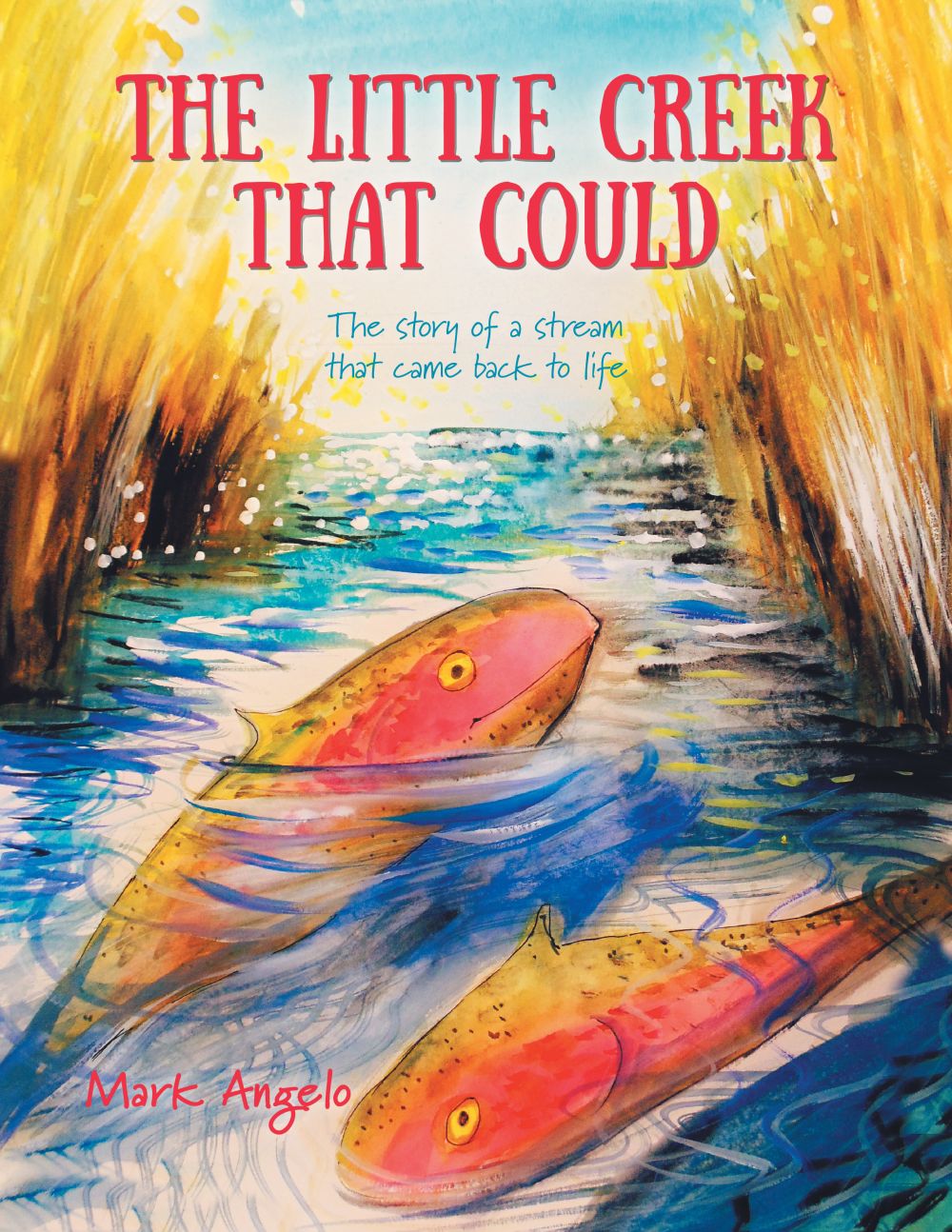

EDITOR’S PERSPECTIVE
“Mark Angelo, Chair Emeritus of the Rivers Institute at the BC Institute of Technology, is an iconic figure in British Columbia. Known far and wide for his numerous river conservation and restoration initiatives, Mark coordinated the compilation of BC’s annual “most endangered rivers” list from its inception in 1993 to 2018. And now he has written a book for kids from kindergarten to second grade. Amazing!,” stated Kim Stephens, Waterbucket eNews Editor and Executive Director, Partnership for Water Sustainability in BC.
“When Mark sent me the news release for The Little Creek That Could, I said you have my attention and now I wish to learn about your ‘story behind the story’. Suffice to say, my ensuing conversation with Mark resulted in me having an ‘aha moment’ when I realized how well the book encapsulates themes that the Partnership for Water Sustainability is striving to bring to the forefront of attention, notably: oral history, intergeneration collaboration, enduring commitment, generational amnesia, and water reconciliation.”
“The five themes are interconnected. If communities have a rich oral history and there is an enduring commitment to intergenerational collaboration, then communities are not likely to be devilled by generational amnesia. And if these factors are reflected in a design with nature guiding philosophy for community development, then the outcome of a water-first approach will be water reconciliation.”
“As each new generation inherits the world, vital knowledge is forgotten. Generational amnesia has profound effects on the way that we see the world. UBC’s Daniel Pauly, another iconic figure in British Columbia, described how generational amnesia manifests itself as a Shifting Baseline. The challenge is to overcome generational amnesia so that communities learn from past experience, apply this knowledge, and achieve better policy, environmental and financial outcomes.”

Bend the Curve
“The Guichon Creek story demonstrates that it is possible to ‘bend the curve’ (as illustrated below). First, however, an oral history is necessary to inspire successive generations. The oral history is a foundation piece for motivating people to believe in the mission to bring natural systems back to life. The Little Creek That Could illustrates that what was, can be again,” continued Kim Stephens.
“People learn from stories. For this reason, the Partnership for Water Sustainability looks for opportunities to showcase the stories of ‘beacons of inspiration’. Previously, for example, we have featured the Bowker Creek Blueprint in the Capital Regional District, Brooklyn Creek in the Comox Valley, Shelly Creek in the City of Parksville, and the North Shore Streamkeepers. Common to all is a vision that engages community.”
“In a June 2021 essay for the BBC’s Wise Words series ,Richard Fisher wrote, As each generation ages, it may be tempting to lament a lack of awareness among the ‘kids these days’, just as the previous generation did when we were young. But when it comes to ensuring that our best memories of the world are not forgotten, it seems at least some of that energy might be better spent passing forward experience, rather than passing judgement.“
“With publication of The Little Creek That Could, Mark Angelo has pointed the way forward. We can turn around almost anything when there is a will, a plan is in place, and there is commitment“, he emphasizes in the story behind the story that follows. Read his book. Be inspired. Follow his example.”

ACKNOWLEDGMENT: This graphic is from Daniel Pauly’s TED Talk in 2010 when he told the story behind The Shifting Baseline. https://www.youtube.com/watch?v=Hui5YH-D6Go
Guichon Creek in Burnaby: “The Little Creek That Could” – Reflections by Mark Angelo on the “story behind the story”
The challenges we face today are immense, but we just have to keep plugging away. I spend so much time with children; that is one of the reasons that led me to write the book The Little Creek That Could. My grandchildren were my source of inspiration. For years, I told them the story. During the pandemic, I finally sat down and wrote the book.

A Story of Hope and Inspiration
It is a story that in my view has an important message, one that will hopefully appeal to children, as well as their influencers who in many cases will read the book to their children. The book tells the story of a creek that came back to life. It is an illustrated children’s book that tells the true story of the five-decade long effort to restore and revive Burnaby’s own Guichon Creek. It was literally a dead stream.
The book speaks to the fact that nature can heal itself if only given a chance. It is a positive and hopeful message for kids. I also think it is very timely given where we are in time. While this book focuses on healing a single stream, the broader message is about healing the environment. My hope is that it will resonate with many regardless of where they live, whether in our province or in our country.
As a youngster, I had a fascination with moving water, and creeks and streams. My experiences living by damaged waterways had a real influence on me. I became interested in and passionate about restoring them. Fifty years ago, however, the notion of ecological restoration was very much in its infancy. When I graduated from university, few people felt that it was worth the trouble or the cost to try and bring degraded urban streams and rivers back to health.
I believed very differently and would say, we must try. If we have a plan and stick to it over time, then we can turn those streams and rivers around. And that has proven to be the case. We can turn around almost anything when there is a will, a plan is in place, and there is commitment.
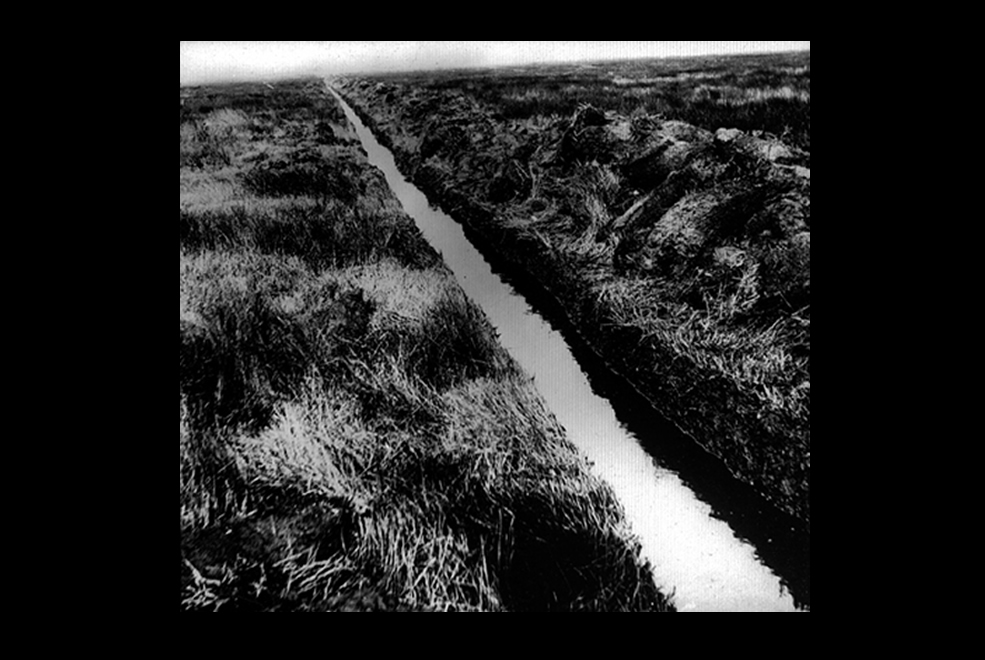
1950s image of a degraded Guichon Creek was taken just a few years before the construction of BCIT’s Burnaby’s campus commenced.
Flashback to the 1970s
On my very first day working at the BC Institute of Technology (BCIT) in the early 1970s, I remember looking at Guichon Creek because it flowed through the campus. I was a teacher in the new fish and wildlife program, and I was so disappointed the creek was in such a bad state. It had been dredged, it was incredibly polluted, and it had been stripped of streamside vegetation. It was a real mess.
On my second day I went back to the creek and happened to meet an elderly gentleman who had lived in Burnaby for more than 80 years. He told me how beautiful and vibrant the creek once was, how he used to fish there as a boy, and that he would see wildlife along the creek. He talked about a time when Guichon Creek was well known to to the local Indigenous community for its clear cold water and abundance of fish. His stories captured my imagination.
This elderly gentleman passed on the history of the creek to me. His stories, the oral history, triggered my interest in trying to turn things around and to work with students, teachers and others in the broader community to bring Guichon Creek back to life. And so, I started talking with my colleagues at BCIT about what we could do. To make a long story short, we decided that however difficult it might be, we would embark on the mission to restore Giuichon Creek.
The book gets into the work we did bringing the creek back to life: cleaning up tons and tons of debris; planting thousands of trees; trying to enhance in-stream habitat; trying to recreate a natural environment adjacent to the creek, and also trying to restore the creek itself. The whole process is outlined in the book, but it is told in a way that I think children or young people will identify with.
So now, through The Little Creek That Could, it is almost coming full circle in that this book is an effort once again to pass on the oral history of Guichon Creek to the next generation.
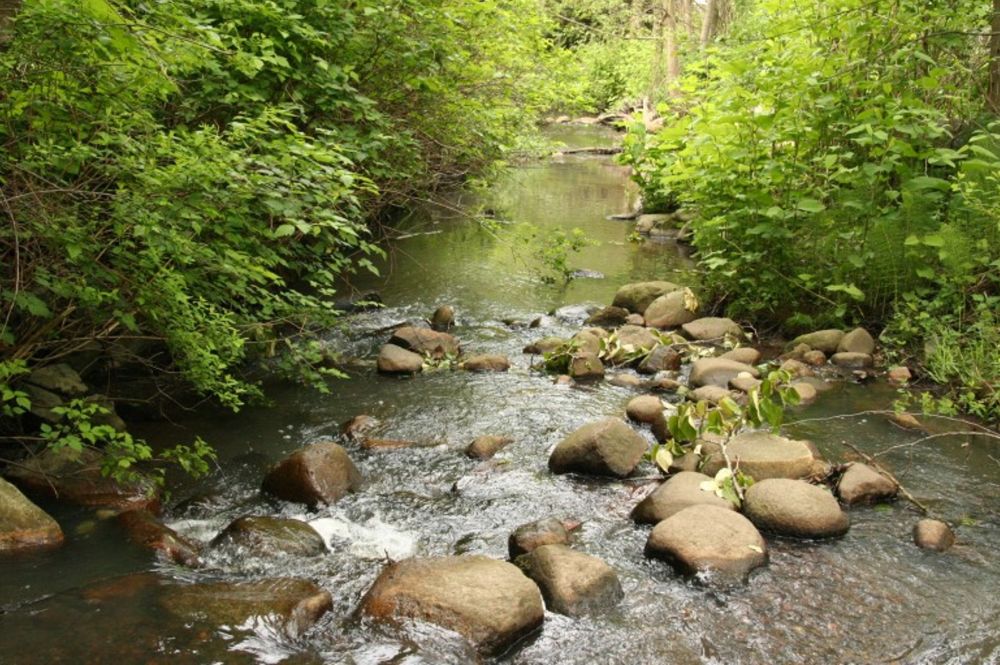
Guichon Creek today. This photo was taken in the general area of where the 1950s historic image above was taken.
Engagement of Community
I am such a believer in engaging the broader community as best we can. Going back 50 years ago to the 1970s when I was first starting as a streamkeeper, being a streamkeeper was a lonely undertaking. Streamkeepers were few in number. One of the great steps forward that I have seen over the decades is that now there are many many streamkeepers and there streamkeeper groups attached to virtually every stream in the Lower Mainland.
I am sure you could say the same in many other areas around the province. These groups are volunteers. They are people who put in thousands of hours, keep an eye on local waterways, and profile issues when they arise. They are people who approach local governments to help them deal with and correct those issues.
They are advocates for local creeks and streams, and I am just such a believer in that engagement. That is one of the messages attached within The Little Creek That Could as well. The book talks about when people come together and a community gets involved. When they work to bring a creek back to life, they can do incredible things!
A Lifetime Influence
The Little Creek That Could starts off talking about the kinds of things I did as a little boy beside creeks – skipping stones, trying to catch water striders, looking for critters or fish or any aquatic insects I could find, trying to catch a crayfish.
The book goes full circle in that it is the kind of thing I do with my grandkids, just as I did as a little boy. It was those experiences as a child that helped cultivate my love for creeks and streams, and the fascination I have always had with moving water.
Growing up, I observed that there was a lot more life closer to creeks and streams than away from them. Those memories have had a huge influence on my life and career. If you grow up close to a creek or a stream, and you spend time beside it, those memories in many cases stay with you forever.
To Learn More:
Watch the trailer on YouTube!
Did you enjoy this article? Would you like a PDF document version?Click on the image below to download your copy.
About the Partnership for Water Sustainability in BC
Technical knowledge alone is not enough to resolve water challenges facing BC. Making things happen in the real world requires an appreciation and understanding of human behaviour, combined with a knowledge of how decisions are made. It takes a career to figure this out.
The Partnership has a primary goal, to build bridges of understanding and pass the baton from the past to the present and future. To achieve the goal, the Partnership is growing a network in the local government setting. This network embraces collaborative leadership and inter-generational collaboration.
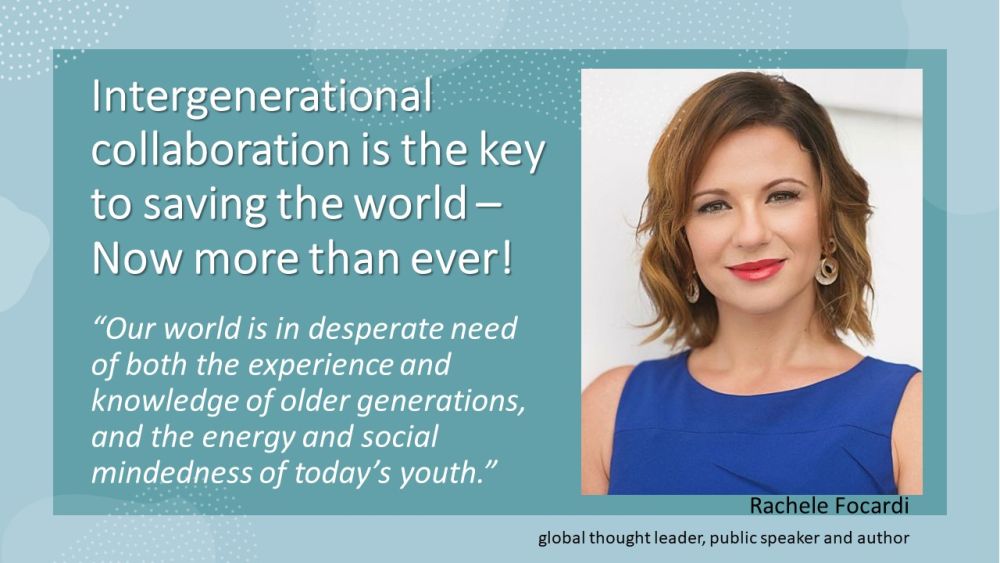
TO LEARN MORE, VISIT: https://waterbucket.ca/about-us/
DOWNLOAD: https://waterbucket.ca/atp/wp-content/uploads/sites/9/2021/11/PWSBC_Annual-Report-2021_version-for-waterbucket.ca_.pdf




